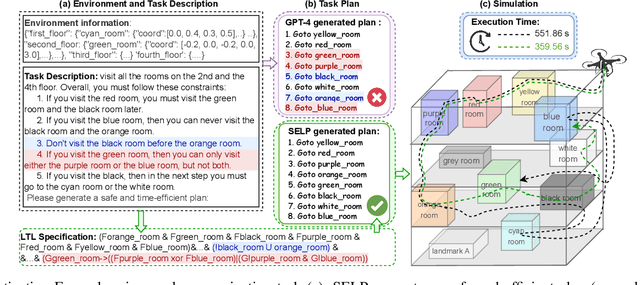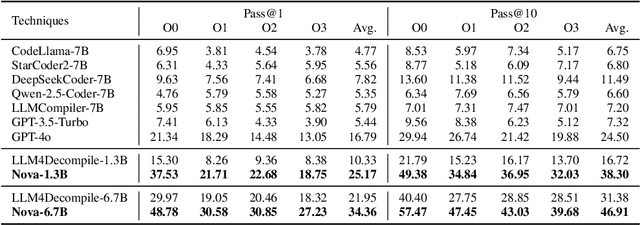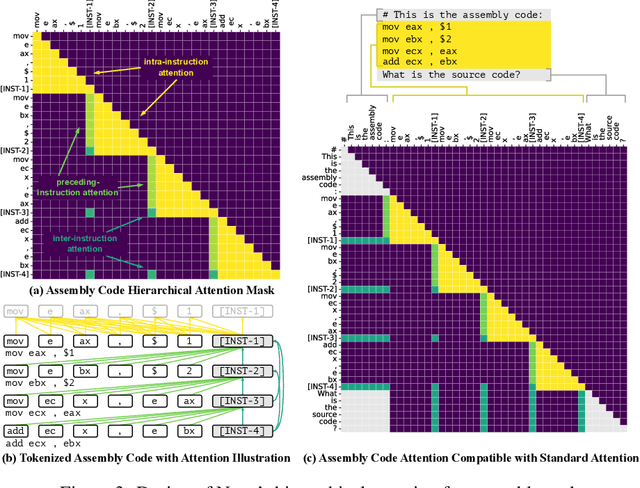Lin Tan
Unified Software Engineering agent as AI Software Engineer
Jun 17, 2025Abstract:The growth of Large Language Model (LLM) technology has raised expectations for automated coding. However, software engineering is more than coding and is concerned with activities including maintenance and evolution of a project. In this context, the concept of LLM agents has gained traction, which utilize LLMs as reasoning engines to invoke external tools autonomously. But is an LLM agent the same as an AI software engineer? In this paper, we seek to understand this question by developing a Unified Software Engineering agent or USEagent. Unlike existing work which builds specialized agents for specific software tasks such as testing, debugging, and repair, our goal is to build a unified agent which can orchestrate and handle multiple capabilities. This gives the agent the promise of handling complex scenarios in software development such as fixing an incomplete patch, adding new features, or taking over code written by others. We envision USEagent as the first draft of a future AI Software Engineer which can be a team member in future software development teams involving both AI and humans. To evaluate the efficacy of USEagent, we build a Unified Software Engineering bench (USEbench) comprising of myriad tasks such as coding, testing, and patching. USEbench is a judicious mixture of tasks from existing benchmarks such as SWE-bench, SWT-bench, and REPOCOD. In an evaluation on USEbench consisting of 1,271 repository-level software engineering tasks, USEagent shows improved efficacy compared to existing general agents such as OpenHands CodeActAgent. There exist gaps in the capabilities of USEagent for certain coding tasks, which provides hints on further developing the AI Software Engineer of the future.
Leveraging Interview-Informed LLMs to Model Survey Responses: Comparative Insights from AI-Generated and Human Data
May 28, 2025Abstract:Mixed methods research integrates quantitative and qualitative data but faces challenges in aligning their distinct structures, particularly in examining measurement characteristics and individual response patterns. Advances in large language models (LLMs) offer promising solutions by generating synthetic survey responses informed by qualitative data. This study investigates whether LLMs, guided by personal interviews, can reliably predict human survey responses, using the Behavioral Regulations in Exercise Questionnaire (BREQ) and interviews from after-school program staff as a case study. Results indicate that LLMs capture overall response patterns but exhibit lower variability than humans. Incorporating interview data improves response diversity for some models (e.g., Claude, GPT), while well-crafted prompts and low-temperature settings enhance alignment between LLM and human responses. Demographic information had less impact than interview content on alignment accuracy. These findings underscore the potential of interview-informed LLMs to bridge qualitative and quantitative methodologies while revealing limitations in response variability, emotional interpretation, and psychometric fidelity. Future research should refine prompt design, explore bias mitigation, and optimize model settings to enhance the validity of LLM-generated survey data in social science research.
Can Language Models Replace Programmers? REPOCOD Says 'Not Yet'
Oct 29, 2024Abstract:Large language models (LLMs) have shown remarkable ability in code generation with more than 90 pass@1 in solving Python coding problems in HumanEval and MBPP. Such high accuracy leads to the question: can LLMs replace human programmers? Existing manual crafted, simple, or single-line code generation benchmarks cannot answer this question due to their gap with real-world software development. To answer this question, we propose REPOCOD, a code generation benchmark with 980 problems collected from 11 popular real-world projects, with more than 58% of them requiring file-level or repository-level context information. In addition, REPOCOD has the longest average canonical solution length (331.6 tokens) and the highest average cyclomatic complexity (9.00) compared to existing benchmarks. In our evaluations on ten LLMs, none of the models can achieve more than 30 pass@1 on REPOCOD, disclosing the necessity of building stronger LLMs that can help developers in real-world software development.
WAFFLE: Multi-Modal Model for Automated Front-End Development
Oct 24, 2024



Abstract:Web development involves turning UI designs into functional webpages, which can be difficult for both beginners and experienced developers due to the complexity of HTML's hierarchical structures and styles. While Large Language Models (LLMs) have shown promise in generating source code, two major challenges persist in UI-to-HTML code generation: (1) effectively representing HTML's hierarchical structure for LLMs, and (2) bridging the gap between the visual nature of UI designs and the text-based format of HTML code. To tackle these challenges, we introduce Waffle, a new fine-tuning strategy that uses a structure-aware attention mechanism to improve LLMs' understanding of HTML's structure and a contrastive fine-tuning approach to align LLMs' understanding of UI images and HTML code. Models fine-tuned with Waffle show up to 9.00 pp (percentage point) higher HTML match, 0.0982 higher CW-SSIM, 32.99 higher CLIP, and 27.12 pp higher LLEM on our new benchmark WebSight-Test and an existing benchmark Design2Code, outperforming current fine-tuning methods.
Collu-Bench: A Benchmark for Predicting Language Model Hallucinations in Code
Oct 13, 2024



Abstract:Despite their success, large language models (LLMs) face the critical challenge of hallucinations, generating plausible but incorrect content. While much research has focused on hallucinations in multiple modalities including images and natural language text, less attention has been given to hallucinations in source code, which leads to incorrect and vulnerable code that causes significant financial loss. To pave the way for research in LLMs' hallucinations in code, we introduce Collu-Bench, a benchmark for predicting code hallucinations of LLMs across code generation (CG) and automated program repair (APR) tasks. Collu-Bench includes 13,234 code hallucination instances collected from five datasets and 11 diverse LLMs, ranging from open-source models to commercial ones. To better understand and predict code hallucinations, Collu-Bench provides detailed features such as the per-step log probabilities of LLMs' output, token types, and the execution feedback of LLMs' generated code for in-depth analysis. In addition, we conduct experiments to predict hallucination on Collu-Bench, using both traditional machine learning techniques and neural networks, which achieves 22.03 -- 33.15% accuracy. Our experiments draw insightful findings of code hallucination patterns, reveal the challenge of accurately localizing LLMs' hallucinations, and highlight the need for more sophisticated techniques.
SELP: Generating Safe and Efficient Task Plans for Robot Agents with Large Language Models
Sep 28, 2024



Abstract:Despite significant advancements in large language models (LLMs) that enhance robot agents' understanding and execution of natural language (NL) commands, ensuring the agents adhere to user-specified constraints remains challenging, particularly for complex commands and long-horizon tasks. To address this challenge, we present three key insights, equivalence voting, constrained decoding, and domain-specific fine-tuning, which significantly enhance LLM planners' capability in handling complex tasks. Equivalence voting ensures consistency by generating and sampling multiple Linear Temporal Logic (LTL) formulas from NL commands, grouping equivalent LTL formulas, and selecting the majority group of formulas as the final LTL formula. Constrained decoding then uses the generated LTL formula to enforce the autoregressive inference of plans, ensuring the generated plans conform to the LTL. Domain-specific fine-tuning customizes LLMs to produce safe and efficient plans within specific task domains. Our approach, Safe Efficient LLM Planner (SELP), combines these insights to create LLM planners to generate plans adhering to user commands with high confidence. We demonstrate the effectiveness and generalizability of SELP across different robot agents and tasks, including drone navigation and robot manipulation. For drone navigation tasks, SELP outperforms state-of-the-art planners by 10.8% in safety rate (i.e., finishing tasks conforming to NL commands) and by 19.8% in plan efficiency. For robot manipulation tasks, SELP achieves 20.4% improvement in safety rate. Our datasets for evaluating NL-to-LTL and robot task planning will be released in github.com/lt-asset/selp.
LATTE: Improving Latex Recognition for Tables and Formulae with Iterative Refinement
Sep 21, 2024



Abstract:Portable Document Format (PDF) files are dominantly used for storing and disseminating scientific research, legal documents, and tax information. LaTeX is a popular application for creating PDF documents. Despite its advantages, LaTeX is not WYSWYG -- what you see is what you get, i.e., the LaTeX source and rendered PDF images look drastically different, especially for formulae and tables. This gap makes it hard to modify or export LaTeX sources for formulae and tables from PDF images, and existing work is still limited. First, prior work generates LaTeX sources in a single iteration and struggles with complex LaTeX formulae. Second, existing work mainly recognizes and extracts LaTeX sources for formulae; and is incapable or ineffective for tables. This paper proposes LATTE, the first iterative refinement framework for LaTeX recognition. Specifically, we propose delta-view as feedback, which compares and pinpoints the differences between a pair of rendered images of the extracted LaTeX source and the expected correct image. Such delta-view feedback enables our fault localization model to localize the faulty parts of the incorrect recognition more accurately and enables our LaTeX refinement model to repair the incorrect extraction more accurately. LATTE improves the LaTeX source extraction accuracy of both LaTeX formulae and tables, outperforming existing techniques as well as GPT-4V by at least 7.07% of exact match, with a success refinement rate of 46.08% (formula) and 25.51% (table).
CaBaGe: Data-Free Model Extraction using ClAss BAlanced Generator Ensemble
Sep 16, 2024Abstract:Machine Learning as a Service (MLaaS) is often provided as a pay-per-query, black-box system to clients. Such a black-box approach not only hinders open replication, validation, and interpretation of model results, but also makes it harder for white-hat researchers to identify vulnerabilities in the MLaaS systems. Model extraction is a promising technique to address these challenges by reverse-engineering black-box models. Since training data is typically unavailable for MLaaS models, this paper focuses on the realistic version of it: data-free model extraction. We propose a data-free model extraction approach, CaBaGe, to achieve higher model extraction accuracy with a small number of queries. Our innovations include (1) a novel experience replay for focusing on difficult training samples; (2) an ensemble of generators for steadily producing diverse synthetic data; and (3) a selective filtering process for querying the victim model with harder, more balanced samples. In addition, we create a more realistic setting, for the first time, where the attacker has no knowledge of the number of classes in the victim training data, and create a solution to learn the number of classes on the fly. Our evaluation shows that CaBaGe outperforms existing techniques on seven datasets -- MNIST, FMNIST, SVHN, CIFAR-10, CIFAR-100, ImageNet-subset, and Tiny ImageNet -- with an accuracy improvement of the extracted models by up to 43.13%. Furthermore, the number of queries required to extract a clone model matching the final accuracy of prior work is reduced by up to 75.7%.
Nova$^+$: Generative Language Models for Binaries
Nov 27, 2023



Abstract:Generative large language models (LLMs) pre-trained on code have shown impressive effectiveness in code generation, program repair, and document analysis. However, existing generative LLMs focus on source code and are not specialized for binaries. There are three main challenges for LLMs to model and learn binary code: hex-decimal values, complex global dependencies, and compiler optimization levels. To bring the benefit of LLMs to the binary domain, we develop Nova and Nova$^+$, which are LLMs pre-trained on binary corpora. Nova is pre-trained with the standard language modeling task, showing significantly better capability on five benchmarks for three downstream tasks: binary code similarity detection (BCSD), binary code translation (BCT), and binary code recovery (BCR), over GPT-3.5 and other existing techniques. We build Nova$^+$ to further boost Nova using two new pre-training tasks, i.e., optimization generation and optimization level prediction, which are designed to learn binary optimization and align equivalent binaries. Nova$^+$ shows overall the best performance for all three downstream tasks on five benchmarks, demonstrating the contributions of the new pre-training tasks.
How Effective Are Neural Networks for Fixing Security Vulnerabilities
May 29, 2023Abstract:Security vulnerability repair is a difficult task that is in dire need of automation. Two groups of techniques have shown promise: (1) large code language models (LLMs) that have been pre-trained on source code for tasks such as code completion, and (2) automated program repair (APR) techniques that use deep learning (DL) models to automatically fix software bugs. This paper is the first to study and compare Java vulnerability repair capabilities of LLMs and DL-based APR models. The contributions include that we (1) apply and evaluate five LLMs (Codex, CodeGen, CodeT5, PLBART and InCoder), four fine-tuned LLMs, and four DL-based APR techniques on two real-world Java vulnerability benchmarks (Vul4J and VJBench), (2) design code transformations to address the training and test data overlapping threat to Codex, (3) create a new Java vulnerability repair benchmark VJBench, and its transformed version VJBench-trans and (4) evaluate LLMs and APR techniques on the transformed vulnerabilities in VJBench-trans. Our findings include that (1) existing LLMs and APR models fix very few Java vulnerabilities. Codex fixes 10.2 (20.4%), the most number of vulnerabilities. (2) Fine-tuning with general APR data improves LLMs' vulnerability-fixing capabilities. (3) Our new VJBench reveals that LLMs and APR models fail to fix many Common Weakness Enumeration (CWE) types, such as CWE-325 Missing cryptographic step and CWE-444 HTTP request smuggling. (4) Codex still fixes 8.3 transformed vulnerabilities, outperforming all the other LLMs and APR models on transformed vulnerabilities. The results call for innovations to enhance automated Java vulnerability repair such as creating larger vulnerability repair training data, tuning LLMs with such data, and applying code simplification transformation to facilitate vulnerability repair.
 Add to Chrome
Add to Chrome Add to Firefox
Add to Firefox Add to Edge
Add to Edge